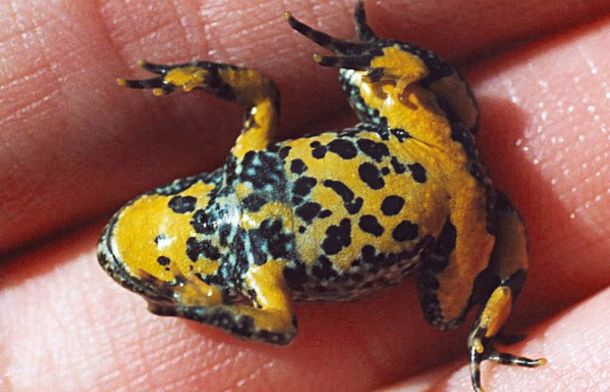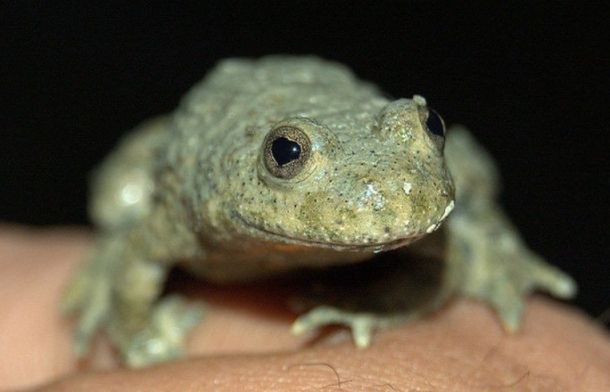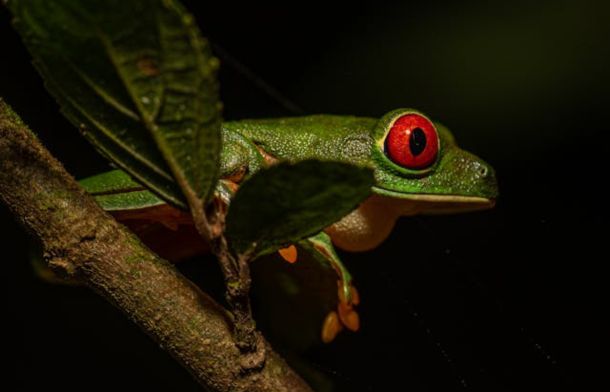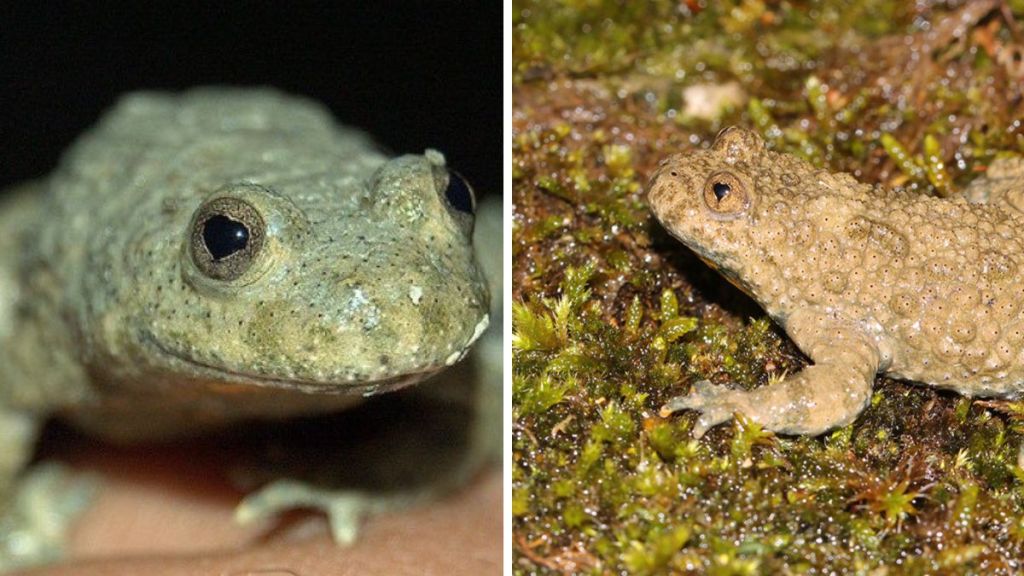Most toads are notoriously ugly. The yellow-bellied toad fits the description but has two unique features that make it stand out: a bright yellow belly and heart-shaped pupils. The yellow belly contrasts with its mottled mud-colored back. The toad spends most of its time hanging out in mud, and his knobby back allows him to blend into the environment.

The other feature that almost makes this toad cute is its heart-shaped pupils.

There isn’t much research on the potential benefits of heart-shaped pupils of the yellow-bellied toad. However, the shape of pupils in different animal species can tell us a little about the animal’s lifestyle. In general terms, round pupils tend to be predators, such as lions and tigers. Horizontal pupils tend to be found on “prey” animals such as goats.
The positioning of the eyes can also give us clues about the animal’s lifestyle. Predators tend to have forward-facing eyes, while prey animals have eyes more toward the side. Forward-facing eyes with round pupils allow larger predators to follow and track their prey better. The eyes on prey animals and the horizontal pupils give them a more comprehensive peripheral range, allowing them to see predators approaching from the side.
We’re Still Learning More About Things Like Heart-Shaped Pupils
Although the available research on pupil shape and eye positioning is mainly applicable to mammals, some reptiles and amphibians have unique pupil shapes we are still studying. House cats, foxes, snakes, and many frogs, like the red-eyed tree frog, have vertical pupils. This type of pupil helps these “ambush” predators focus on their prey.

Studies on pupil shape and eye positioning are ongoing, and they will help us understand the other animal species with which we share our planet. If you enjoyed this brief exploration of the topic, please share this with others.
You can find the source of this story’s featured image here and here.
Want to be happier in just 5 minutes a day? Sign up for Morning Smile and join over 455,000+ people who start each day with good news.



